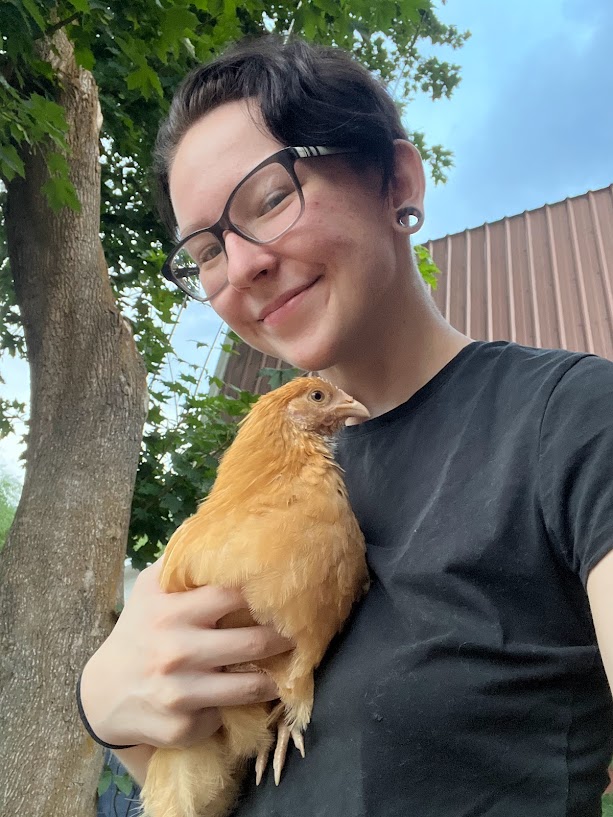Satlonia
We came to this land, unknown to live, unknown to purpose. Then our civilisation grew, and we became tamers of life, controlling others, our purpose was to conquer the lands...Satlonia is believed to be the first civilisation of the known world. It is commonly believed Satlonians came to Saithon by travelling from Hailaid, across the Unknown Sea, down the eastern part of Lands of the Unknown, and finally arriving at the highest point of the northern tip of the largest island, Saithon.
If we are to believe the calculations the scholars of the western world have made, the migration from Hailaid to Saithon would have happened around 9,000 BGD. But if we are to look at records made in Saithon, there can be pieces of evidence that their first settlement is much older, and therefore slightly contradicting the Irathian priests and scholars' theories about the known world.
The Origin of the Satlonians
It began long ago. The universe was chaos and order fighting for power. From this constant warring, an egg was made, and not long after Maulyosh was created. Maulyosh was the first known god, but his body which was made from flesh could not withstand the power of light and flames that were inside him. He knew his life would not last long and so he wished for someone to take over. The day when the light burst through his flesh, he saw two people rising from his very flesh. He named the man Oranth and the woman Hethna. His flesh then tore apart, killing him in the process, but the light and flames inside were still there.
A Difficult Translation
From the translations of the Satlonian scriptures on Hapneth Aksul in Sindred, Maulyosh proved to be a difficult word to translate. While there was no doubt the word referred to a similar meaning as Glux. But breaking apart the word, maul can also mean light, and yosh means realm, at least in the current language spoken across Saithon. What confused all scholars was the whole idea that Maulyosh seemed to be a being also, the pictograms clearly showed this. Somehow the thought of Maulyosh meaning realm, light, Glux, and was a being, is not easy to grasp for modern understanding.Saitlonian Gods and Funeral Rites
Oranth and Hethna decided to make a world from Maulyosh's flesh and blood. They made the rivers and seas from his blood and the land of his flesh. Oranth had decided to stay in the sky to keep Maulyosh light from destroying the world they had created, while Hethna continued to create and develop the lands. Years after, they had grown fond of each other, and so they were married and had three children; Has Orin, Ob Nath, and Setsan. They named Has Orin, god of War and Order as their heir, but the other two siblings had their domains. Ob Nath became the god of the Sea, and Underworld and Setsan became the goddess of Fate and Love.
The Satlonian gods are still fairly similar to modern gods, suggesting the origin of Saithon's religion began with the Satlonians, however, the modern gods no longer include Maulyosh as a being, but just the realm of light where the gods reside in. The main gods still exist, but more gods have been added afterwards.
The scriptures also tell that Satlonians would let their dead sink to the bottom of the ocean for them to travel faster to the Underworld. If Ob Nath accepted their gifts of offering brought with them when they were put under the sea, their life would be better in the afterlife.
Hethna had in the meantime become the goddess of Life and Land, while her husband, Oranth was the god of Death and the Sky. While Hethna was happy for her three children, she knew the world needed more, and from clay, she shaped different races to populate the world, while passing life to them.
Hethna and Oranth are often referred to as Aldenfather and Aldenmother, meaning the 'oldest' and 'gods of all. It was Hethna who made the people of Saithon, shaping them from clay and putting their souls inside. Often 'body' in Saithon is depicted as a clay vase with the soul, a round orb that shines, inside it. Another reason why the dead body had to be underwater since it was believed the soul could be free from its container faster.
Satlon Technological Achievements
Centuries passed, until one day the Maulyosh slipped the grip of Oranth and was falling to the land. It became the desert She'rai, gold and hot, sand and thorny plants were the only things to see for miles. Has Orin knew they had to control the Maulyosh better, and so he asked his sister, Setsan to create a thread strong enough that even Maulyosh could not burn it. Being the goddess of fate, she knew the truth to his word and spun a fine, but a strong thread to tie the Maulyosh. Has Orin, despite being burned in the process tied the thread around it, knew it had to be carried over the sky for it not to fall again, and every day he carried Maulyosh he received serious burns, which his mother healed.
Satlonia were ahead of time and had developed several technological achievements throughout their era. They had discovered ways to spin fibres such as wool, flax, cotton, and even Sea silk. The Sea silk is evident in an old fairy tale, The Two Princesses and the Golden Thread, that is believed to have originated during the Satlonian era, although it is suggested that it was invented near the end of Satlonia.
Seeing the struggles of their son, they decided to gift him a boat that could sail the Maulyosh across the sky. So they visited their other son, Ob Nath, for he was the god of water. He agreed only if the Maulyosh would travel to the underworld half of the time, for it was dreary cold and dark. Being the god of Death, Oranth knew he did not want the souls to suffer, so he agreed. A finely crafted boat was presented to Has Orin from his brother, and he immediately tied the Maulyosh to the boat.
Another technological achievement they discovered was making boats and chariots, making it very easy for them to conquer all of the Saithon islands. War and conquests were almost second to the Satlonian nature of things. They were vicious and killed anyone not willing to submit to their culture. Today, the findings of these war chariots and shipwrecks from the many Satlonian wars can be found all over the southern islands, and even in the lower part of Western Agia. These wrecks make it hard to sail to the southern islands even to this day.
More centuries passed, and one day Has Orin was about to pass the boat to his brother, Ob Nath, he saw a young woman relaxing in the light of Maulyosh. He immediately fell in love and wanted to be with her. After passing the boat to Ob Nath, he returned to the woman, and every day after he had passed the boat to his brother, he spent his time with her. Sunra was her name, and she had been a faithful servant to his mother, Hethna. Her mother and father approved of their marriage, and she became his wife. It was then decided that all their descendants should be kings in the mortal world.
The Satlonians believed they were superior to other races and ethnicities due to their whole belief that every Satlonian king was a direct descendant of the Has Orin, and believed the people too had some connection to the union of Has Orin and Sunra. The kings of Satlonia could only become kings after serving the gods for a certain amount of time. It was also required of them to be a warrior, being in a battle at least once before they were crowned. Therefore, every Satlonian king was also a priest and a warrior.
The End of Satlonia
Two events led to the fall of Satlonia. First, the Church of Irath had been annoyed by their raidings and warring in the lower lands of Western Agia. They had gathered several supporters from the kings in Western Agia, and called the campaign "The Cleansing Mark". It was a campaign to both stop the invading nation from taking hold of any Western Agian countries and to establish their religious presence there.The other event that led to the fall, was inner turmoil caused by a king who refused to marry the woman that had been chosen for him and instead made a foreign prisoner his wife and queen consort. The people of Saitlonia saw it as an insult to their ways since only the kings would be able to carry a pure line from Has Orin, and they saw foreign blood in marriage as a sign of weakness. A civil war broke out, resulting in the foreign queen consort being killed, and the king committed suicide, ending the long line of Has Orin.
Today, some of the current kings and emperors in Saithon still believe they have some blood connection to Has Orin, though not as strong as the last known descendant.
- Oranth: The God of Sky and Death
- Hethna: Goddess of Land and Life
- Has Orin: God of War and Order
- Ob Nath: God of Sea and Underworld
- Setsan: Goddess of Fate and Love
Other gods
- Maulyosh: The being who gave life to Oranth and Hethna, and was killed by the light and flames inside him.
- Sunra: Married to Has Orin, Mother of Kings. Not directly considered a goddess.
Ships,
Flax production,
Wool production,
Cotton production,
Sea silk.
Related articles:
(WIP)History of Fabric Industry (WIP)











I like the way you add depth to your world with the article, deepening other gods/beliefs, so to speak. And that makes it even more questionable what is true. But I especially like the reason why the empire fell, among other things. Well, that was probably a bad time for love. And then to strangers too, how can you. And yes, your time list is extensive.
Thank you so much :D This culture will definitely be worked on some more, as it is soo different from Western and Northern Agia. I'm happy you doubt the truth of my world, it's totally intentional! And yes love wasn't meant for kings.